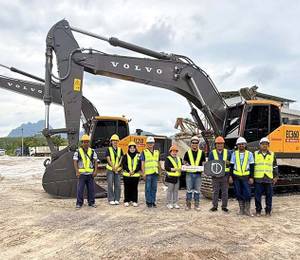To secure Singapore’s capacity to ride on the long-term growth of aviation, work on the Changi Airport Terminal 5 (T5) project has resumed, announced Changi Airport Group (CAG) yesterday (21 Aug).
CAG is re-mobilising the design and engineering consultants to refine the T5 design. Construction is expected to commence in about two years, and T5 is planned to be operational around the mid-2030s.
T5 will be located within the 1,080-ha Changi East development that is almost as big as the land area of today’s Changi Airport. It will be able to handle approximately 50 million passengers per year, and will be designed with the flexibility to be built in two phases, in line with traffic growth.
Speaking at the National Day Rally 2022 yesterday, Singapore’s Prime Minister Lee Hsien Loong said, “Before the pandemic, we were about to call a tender to build T5. Due to Covid-19, we paused our plans for two years, but we made good use of the down time. We reassessed the long-term prospects for air travel and improved the terminal design. We concluded that the future of aviation remains bright.
“In the longer term, air travel will keep growing because of a fast-expanding middle class in our region. Hence we decided to go ahead and restart the T5 project. We redesigned T5 to be more resilient. In particular, to operate more safely and flexibly during a pandemic – to scale operations up and down more easily, and to isolate passengers from different flights to limit cross infection.”
“We also made T5 greener and more energy-efficient,” added PM Lee. When completed in the mid-2030s, T5 will show the world what sort of place Singapore is.”
PM Lee continued, "Next to T5 we will develop the Changi East Urban District. This will be a new business and lifestyle destination, creating more jobs and opportunities for Singaporeans.”
According to CAG, masterplanning for the development of the Changi East Urban District (CEUD) will be done in consultation with the Ministry of National Development (MND), the Urban Redevelopment Authority (URA) and other agencies.
A resilient and sustainable airport
First announced in 2013, the T5 project is undertaken the Ministry of Transport (MOT), the Civil Aviation Authority of Singapore (CAAS) and CAG.
Due to the Covid-19 pandemic, the project was paused for two years. During this time, MOT, CAAS and CAG re-assessed the trajectory of aviation growth, and reviewed the design of the terminal to make it more modular and to enhance its resilience and sustainability.
CAG explained that, drawing on lessons learnt from the Covid-19 pandemic, T5 will be designed with the flexibility to operate as smaller sub-terminals when needed, with space that could be converted for use during contingencies, such as for testing operations or the segregation of high-risk passengers.
Specialised provisions to reduce the transmission of diseases will also be deployed in T5. This includes contactless systems at passenger touchpoints, plus enhanced ventilation systems that can be activated during a pandemic to increase the use of fresh air and minimise the mixing of air.
In terms of sustainability, CAG said T5 will be a Green Mark Platinum Super Low Energy Building as certified by the Building and Construction Authority (BCA).
To reduce the carbon footprint of T5, solar panels, smart building management systems, as well as district cooling combined with thermal energy storage, will be deployed in the terminal building.
T5 will also be ready for viable alternative fuels including the use of sustainable aviation fuel, and for the provision of fixed ground power and cooling for aircraft parked at the gates.
Furthermore, T5 will leverage technology to automate and digitalise airport operations, to enhance the passenger experience and increase manpower productivity. It could see the deployment of autonomous vehicles to support baggage and cargo transport on the airside, as well as robotics for baggage handling.
All images: Changi Airport Group













